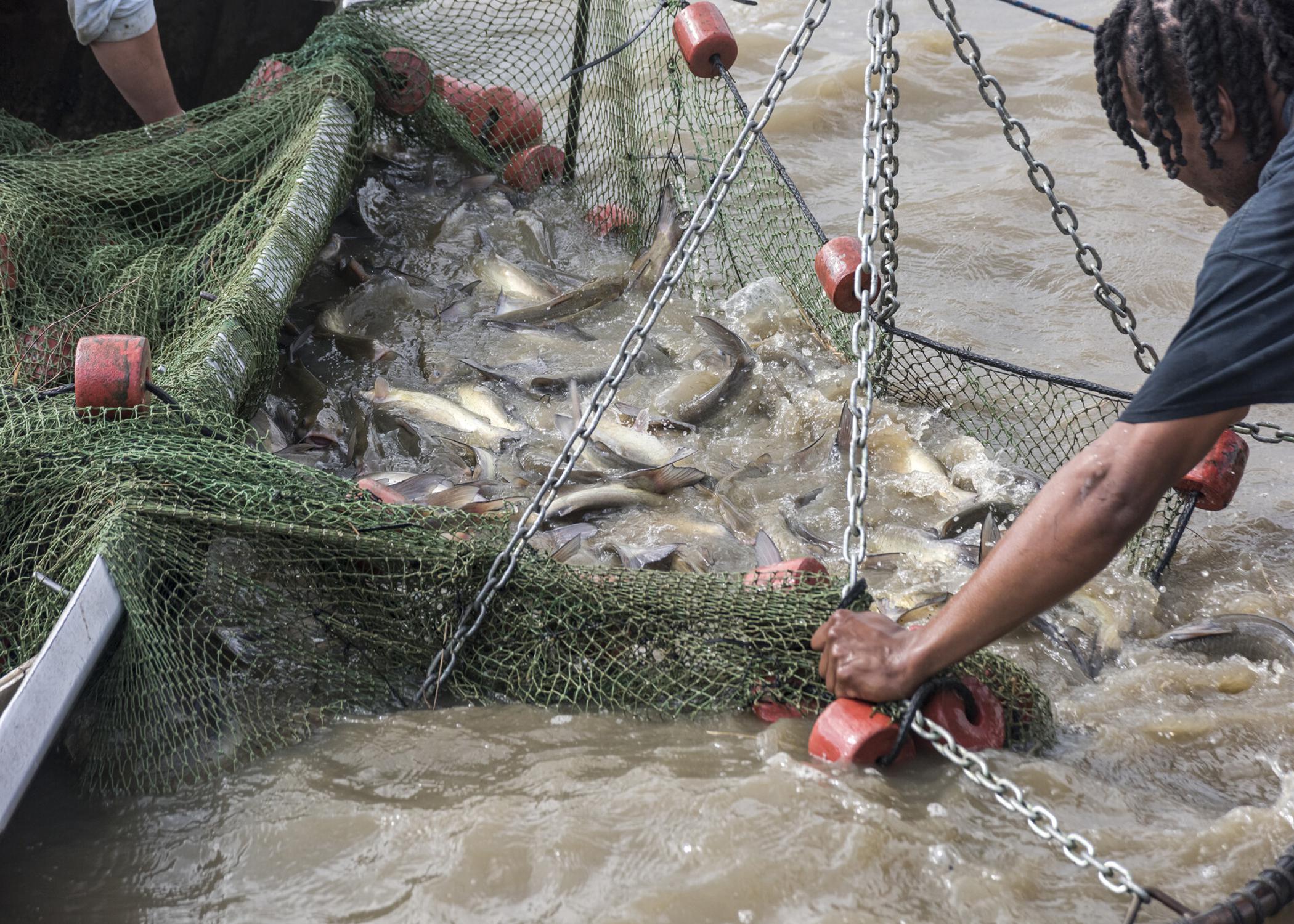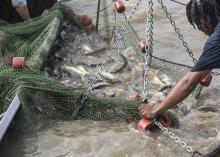Catfish producers navigate challenges
STARKVILLE, Miss. -- Lower feed prices are providing some relief to Mississippi’s catfish producers, but many are still facing more than their share of obstacles just to break even.
Among these are middling demand, high operating costs and renovation.
“Marketing challenges have delayed fish sales by small and medium-sized farms as processors try to clear inventory of large fish products from their freezers,” said Jimmy Avery, Mississippi State University Extension Service aquaculture professor at the MSU Delta Research and Extension Center in Stoneville. “Retailers are taking advantage of these lower priced products leading to a decreased need for average size fillets.”
Mississippi is still the top state for catfish production in the U.S., joined by neighboring Arkansas and Alabama as the industry’s three major states. Despite a slight reduction in water surface acreage this year from 2023, Mississippi still has double what their two closest competitors have combined.
“Catfish water acreage continues to drop in major producing states. Mississippi acreage in July 2024 is 29,000 acres, down 3,000 acres from the same month in 2023,” Avery said. “Another 1,100 acres is currently under or scheduled for renovation.”
Despite the reduction in acreage, processing and feeding amounts are close to last year’s volume.
“Catfish processed through the first half of 2024 totaled 165 million pounds, which is 2% higher than the same period in 2023,” said MSU Extension agricultural economist Josh Maples. “Prices received by farmers have been about 12% lower than during the first half of 2023.”
Feed prices have stabilized in the $475-per-ton range for 32% protein feed, which is down about 10% from last fall.
“While feed costs have come down some from the highs seen in 2023, other costs such as labor, fingerlings and interest expenses are still elevated,” Maples said.
This year, most channel catfish hatcheries reached their spawning season goals by late May. This season typically lasts from late April to mid-June.
“Several of the hybrid catfish hatcheries ran a couple of weeks longer due to the logistics of handling both blue catfish males and channel catfish females,” Avery said. “While the short season complicates fry pond preparation, fingerling producers will benefit from more feeding days before winter sets in.”
Ganesh Kumar, aquaculture economist with the Mississippi Agricultural and Forestry Experiment Station, said the cost of catfish production currently ranges from $1.12 to $1.30 per pound while producers receive $1.10 to $1.15 per pound for their fish. This is closer to being temporarily profitable at large operations, which typically have 700 to 2,000 water acres, but those only comprise one-third of the approximately 150 catfish farms in the state.
The remaining two-thirds, Kumar said, are either small -- 80 acres or less -- or medium-sized, which is up to 300 acres. Costs necessary to feed, aerate and fend off avian predation add up faster for these operators.
“The industry has gone through these cycles where input costs increase, pond inventories are high, and output prices are flat or down,” Kumar said. “You can survive a lack of profits for a short period, but when your bad profit years linger for two to three years, cash flow and payment issues start to creep up, and that mostly affects the small and medium-sized farms.
“Economies of scale is a reality in catfish farming,” he added, “but many producers on small and medium-sized farms are trying to pay back loans and lines of credit. When you have longer periods with a lack of profits like we’ve seen for the last two years, that’s when things can go south.”










